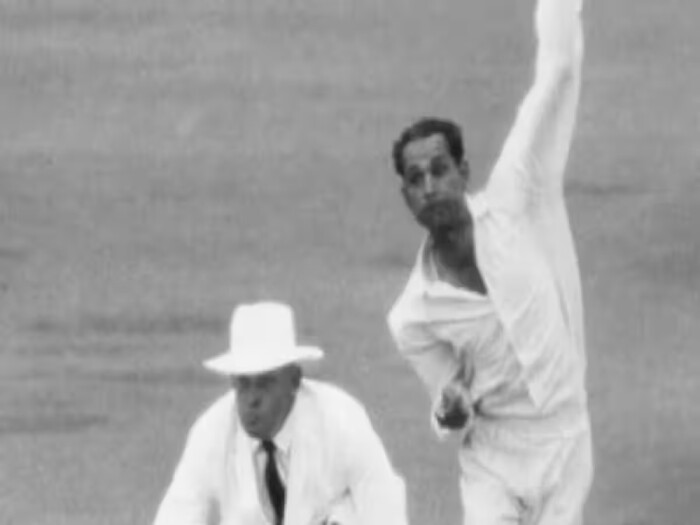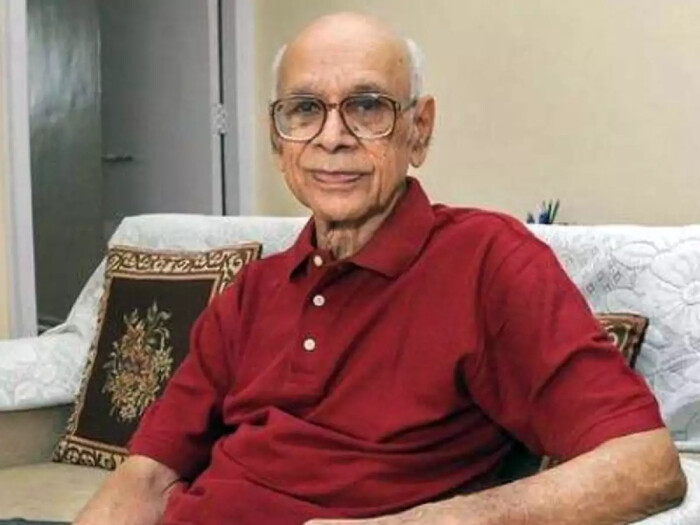There is a remarkable record in cricket that has withstood the test of time, defying chances and the shifting nature of the game in the ever-evolving sport where flamboyance and power often steal the show. It is a record that belongs to a man whose name may not be popular with cricket fans of a younger generation but who has a significant place in the history of the sport of cricket. Rameshchandra Gangaram ‘Bapu’ Nadkarni, a former left-handed batsman for India and left-arm orthodox spinner, cemented his place in cricket mythology by setting an unattainable record for the bowler who bowled most consecutive dot balls.
A Spinner Extraordinaire
On April 4, 1933, Bapu Nadkarni began the journey in the sport of cricket in Nashik, Maharashtra. The cricket fraternity was unaware of the lasting impact this quiet man would have on the game. During the 1955–56 season, Nadkarni made his Test debut for India against New Zealand; his debut was without any wickets. However, his career lasted far longer than just one match. He showcased his talent as a left-arm spinner and confirmed his value as a useful left-handed batsman in the years that followed.

Bapu Nadkarni played 41 Test matches throughout his career, which lasted from 1955 to 1968, hitting 1,414 runs, including a century, and taking 88 wickets, including a career-best bowling effort of 6/43. Even though these numbers are outstanding, it is his exceptional precision when bowling that truly separates him. With a remarkable career economy rate of 1.67 runs per over in Test matches, Nadkarni managed to frustrate the opposition’s batsmen with his precision.
Bapu Nadkarni: The Bowler Who Bowled 21 Maiden Overs in a Row
However, one particular incident that occurred during India’s 1963–64 home series against England in Madras stands out above any other in terms of his career. This amazing accomplishment, which still stands as a world record, displayed Nadkarni’s unparalleled control of the cricket ball.
In that crucial Test match against England on January 12, 1964, Bapu Nadkarni started an amazing run of left-arm spin bowling. He bowled a remarkable 21.5 consecutive maiden overs, which stunned cricket fans all over the world. For you to put this into perspective, remember that he bowled 131 consecutive dot balls, a feat that in the age of power-hitting and T20 extravagance seems nearly impossible.
During those 21 maiden overs, Nadkarni’s relentless accuracy and concentration led to figures of 32-27-5-0. No wickets were lost in 32 overs, yes, you read that correctly. His performance showcased his remarkable talent and mental toughness in spades. Nadkarni’s ability to consistently place the ball in the right spots was nothing short of amazing in an era when batters weren’t limited by helmets and contemporary safety gear.
Unsung Hero of Indian Cricket
Although Bapu Nadkarni’s bowling abilities are well known, it’s important to remember his batting achievements as well. He wasn’t simply a skilled bowler; he was an all-around player with some batting ability too. Nadkarni had a fantastic batting average of 40 and a first-class record which included 14 century. His famous seven-hour, unbeaten 122-run batting performance against England in the Fifth Test of the 1963–1964 series was among his batting prowess. This outstanding effort, which exhibited his perseverance and resolve, helped India save a tie after continuing the game.
Despite his outstanding achievements, Bapu Nadkarni frequently fades into history and is overshadowed by modern cricketing superstars. He may not be renowned to cricket fans of today, but for those who watched the sport in the 1960s, he was definitely a player who attracted spectators and earned respect.
A Legacy That Lives On
Rameshchandra Gangaram ‘Bapu’ Nadkarni passed away on January 17, 2023, at the age of 86, and the cricketing world bid goodbye to a legend. While he may not be with us anymore, his legacy lives on in the records that were set in his honour as well as in the memories of those who had the pleasure of witnessing him perform. His ability to bowl 21 straight maidens is still an outstanding achievement and a monument to the focus, commitment, and enthusiasm he brought to the game of cricket.
Nadkarni, who bowled the most consecutive dot balls, serves as an everlasting testament to cricket’s rich history and the exceptional individuals who have graced the game in an era where records are broken almost as rapidly as they are set. It’s a feat that demonstrates the strength of accuracy, precision, and an unwavering spirit of competition.

The legacy of Bapu Nadkarni continues despite the changes in the world of cricket, acting as a source of inspiration for aspiring players and a representation of the pervasive charm of the game. In the era of boundaries and sixes, his extraordinary achievement stands as a testimony to the artistry of spin bowling and as an icon of control and precision. The bowler who bowled the most consecutive dot balls, Bapu Nadkarni, is one of cricket’s greatest players and his name.
Bowlers who bowled the most consecutive dot balls in a Test match
- Hugh Tayfield (South Africa): 137 dot balls (against England, Durban, 1957) (8-ball overs)
- Bapu Nadkarni (India): 131 dot balls (against England, Madras, 1963-64) (6-ball overs)
- Muttiah Muralitharan (Sri Lanka): 19 maiden overs (against Australia, Galle, 1999)
- Anil Kumble (India): 17 maiden overs (against Pakistan, Bangalore, 1996)
- Shane Warne (Australia): 16 maiden overs (against South Africa, Melbourne, 1999)
- Rangana Herath (Sri Lanka): 16 maiden overs (against England, Galle, 2014)
- Stuart Broad (England): 15 maiden overs (against India, Nottingham, 2011)
Hugh Tayfield, another legendary economical spinner, had bowled 137 consecutive dot balls against England in Durban in January 1957 as compared to Bapu Nadkarni’s 131 dot balls but that Test match consisted of eight-ball overs.
It is important to note that since Bapu Nadkarni’s time, the rules of cricket have changed, and the modern definition of a maiden over is a bit different. A maiden over during Nadkarni’s era was one in which the bowler did not allow any runs to be scored or extras. The term “maiden over” now refers to an over in which the bowler does not allow any runs to be scored. It also means that under current regulations, Nadkarni’s record of bowling 131 consecutive dot balls would not be achievable.

